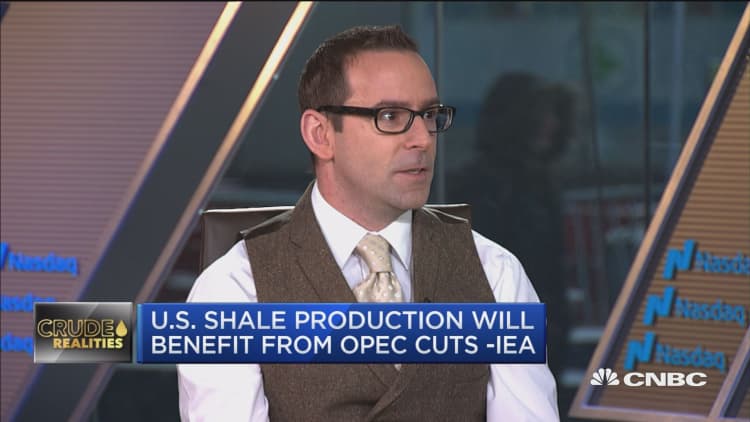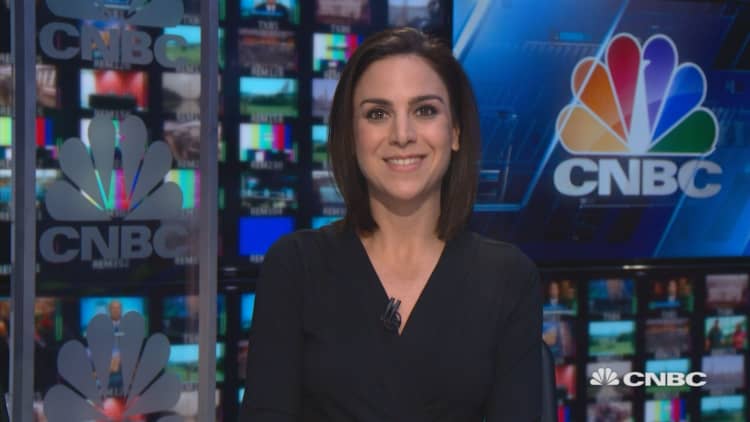Oil prices were up slightly on Thursday as a pipeline outage in Britain continued to lift Brent crude prices.
Oil prices rebounded in mid-morning trade on Thursday, having earlier sunk after the International Energy Agency increased its forecast for U.S. oil output growth in 2018, raising the prospect of excess supply.
Brent crude futures, the international benchmark for oil prices, were up 87 cents, or nearly 1.4 percent, at $63.31 a barrel by 2:26 p.m. ET (1926 GMT). U.S. West Texas Intermediate (WTI) crude futures ended Thursday's session up 44 cents to $57.04 a barrel.
Prices have been supported by an outage on the Forties crude pipeline that was expected to last several weeks. Operator Ineos declared force majeure on crude oil, gas and condensate deliveries from the pipeline, a source familiar with the matter told Reuters on Wednesday.
"At present you cant ignore the impact of the Forties pipeline outage," said John Kilduff, partner at Again Capital Llc in New York, "Its a significant amount of oil that the market is going to miss and is missing. And its almost surprising its not generating more support."

Brent was well below the $65.83 a barrel June, 2015 high reached earlier this week. It hit that level after the Forties pipeline in the North Sea, which carries significant amounts of crude used to underpin Brent crude futures, was shut down due to cracks.
A fall in U.S. crude inventories last week also lent some support. Stocks fell by 5.1 million barrels in the week to Dec. 8, the fourth consecutive week of decline, to 442.99 million barrels, the lowest since October 2015.
The front month of the U.S. crude curve for February and March remains in backwardation. Crude backwardation, in which the futures contract trades below the crude oils expected spot price at the contracts maturity, is an indicator of a tight market.
The Paris-based IEA said U.S. crude output next year would climb by 870,000 barrels per day (bpd), up from its November forecast of 790,000 bpd.
The change mirrors upward revisions issued by the Organization of the Petroleum Exporting Countries and the United States government.
"The IEA underlined the same take that the U.S. Energy Department had the day before yesterday and OPEC had yesterday," said Bjarne Schieldrop, chief commodities analyst with SEB Bank, adding that further upward revisions for growth could follow.

With cash pouring into the U.S. shale oil industry, the United States is on track to deliver up to 80 percent of the world's oil production gains through 2025, the IEA estimates.
OPEC revised its estimate for U.S. oil output growth for 2018 to 1.05 million bpd, while the U.S. Energy Information Administration increased its growth forecast to 780,000 bpd.
The market has been capped by soaring U.S. production, which has risen by 16 percent since mid-2016 to 9.78 million barrels per day, the highest since the early 1970s and close to levels from top producers Russia and Saudi Arabia.
Singapore's OCBC bank said on Thursday in its 2018 commodities outlook that a "further rise in prices could well be met by stronger U.S. production as shale oil players turn taps on," suggesting that oil prices may not rise too far in 2018.
The IEA expects the oil market to have a surplus of 200,000 bpd in the first half of next year before reverting to a deficit of about 200,000 bpd in the second half. This meant 2018 overall would show "a closely balanced market."
— CNBC's Tom DiChristopher contributed to this report.

